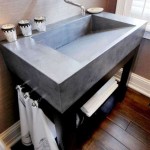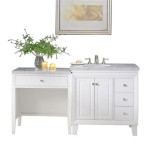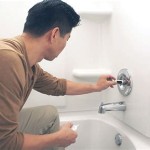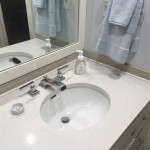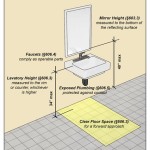How to Remove Bathroom Paint From Walls
Removing paint from bathroom walls can be a challenging task, especially when dealing with multiple layers or stubborn finishes. However, with the right tools and techniques, it is achievable. This article provides a comprehensive guide to help you effectively remove bathroom paint from walls, ensuring a smooth and successful outcome.
1. Prepare the Area and Choose the Right Tools
Before embarking on the paint removal process, it is crucial to prepare the area and gather the necessary tools. This involves clearing the bathroom of any furniture or objects that could obstruct your work. Protect the floor with drop cloths or plastic sheeting to avoid paint spills and drips. For safety reasons, wear protective gear such as gloves, goggles, and a respirator mask to prevent exposure to dust and fumes.
The tools required for paint removal will depend on the type of paint and the condition of the walls. Here are some essential tools:
- Paint scraper: A sturdy scraper with a sharp blade is ideal for removing loose paint and chipping away at stubborn layers.
- Putty knife: A putty knife can be used to scrape away paint in tight corners and crevices.
- Sandpaper: Sandpaper in various grits (coarse to fine) can smooth out rough spots and remove minor paint residue.
- Heat gun: A heat gun can soften paint, making it easier to remove.
- Chemical paint remover: A chemical paint remover can be used to soften and loosen paint, especially for multiple layers or stubborn finishes. However, it is important to choose a remover that is compatible with the type of paint and the materials of your walls.
- Cleaning cloths: Cleaning cloths are necessary for wiping away paint residue and debris.
2. Remove Paint with Scraping and Sanding
Once the area is prepared and the tools are gathered, you can begin the paint removal process. If you're dealing with loose or flaking paint, use a paint scraper to gently remove it. Start from the edges and work your way inward, applying moderate pressure. If the paint is more stubborn, you may need to use a putty knife or a chemical paint remover.
After scraping, use sandpaper to smooth out any remaining rough spots. Start with coarse-grit sandpaper to remove the majority of the paint residue and then gradually move to finer grits for a smoother finish. Remember to sand in the direction of the wood grain if you're working on wood paneling.
3. Utilize Chemical Paint Remover for Stubborn Paint
If you're encountering stubborn paint that is resistant to scraping and sanding, you can resort to chemical paint removers. Choose a remover that is compatible with the type of paint and the materials of your walls. Follow the manufacturer's instructions carefully and wear protective gear. Apply the remover generously to the paint surface and allow it to sit for the recommended amount of time.
Once the paint has softened, use a scraper, putty knife, or a combination of the two to remove it. You may need to repeat the application of the chemical remover if the paint is still stubborn. Rinse the area with water to remove residue and allow it to dry completely before proceeding to the next step.
4. Consider Using a Heat Gun
A heat gun can be a useful tool for removing paint, especially on surfaces that are sensitive to chemicals. It works by softening the paint, making it easier to scrape off. However, it is important to note that using a heat gun can pose a fire risk if not handled carefully. Always wear protective gear and follow the manufacturer's instructions.
When using a heat gun, hold it a few inches away from the painted surface and move it back and forth slowly. Avoid overheating the surface as this can damage the underlying material. Once the paint starts to bubble and soften, use a scraper or putty knife to remove it. Be careful not to touch the hot surface.
5. Cleaning and Finishing
After removing the paint, it is crucial to clean the area thoroughly. Use a damp cloth or sponge to wipe away any paint residue, dust, or debris. Allow the walls to dry completely before proceeding to the next step. If you plan to repaint the walls, it is recommended to apply a primer first to ensure that the new paint adheres properly to the surface.
Once the paint is removed and the walls are clean, you can move on to the final steps such as repainting, wallpapering, or applying a new finish. Be sure to choose suitable products that are compatible with the type of surface and the intended use.

3 Ways To Remove Paint From Walls Wikihow

How To Get Rid Of Paint Spills Splatters And Mistakes Even After They Ve Dried The Creek Line House

How To Fix Paint Ling Off The Bathroom Ceiling

How Do I Remove Sand Paint From The Walls Of A Small Bathroom Hometalk

Bathroom Plans How To Strip Wallpaper What Worked Best Young House Love

How To Repair A Ling Bathroom Wall Or Ceiling Melanie Lissack Interiors

Ling Paint On Ceiling 5 Useful Tips To Fix The Royal Home Painters Toronto Richmond Hill Markham

How To Get Water Stains Off Bathroom Walls Igloo Surfaces

How Do I Remove Sand Paint From The Walls Of A Small Bathroom Hometalk

How To Remove Ling Paint From Walls Family Handyman
Related Posts

